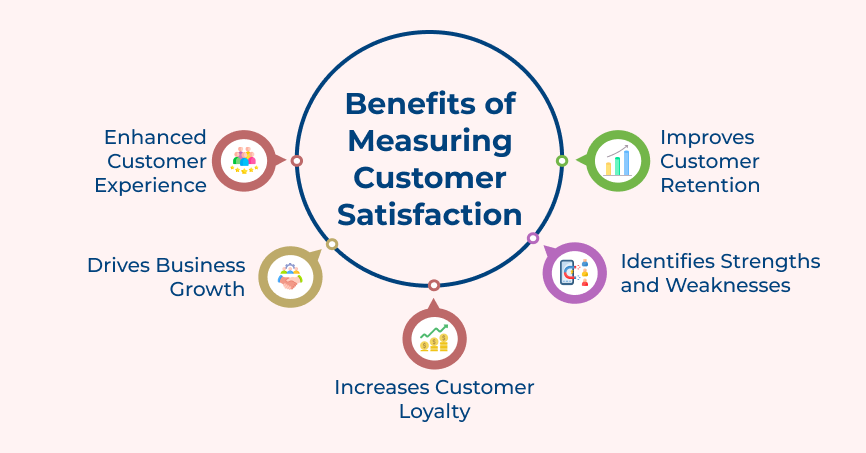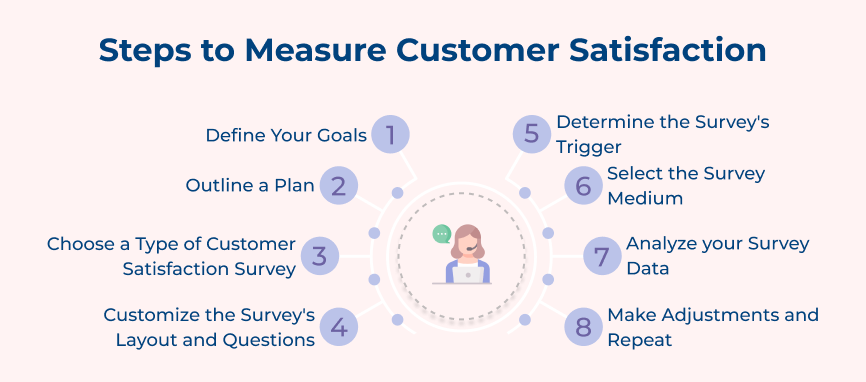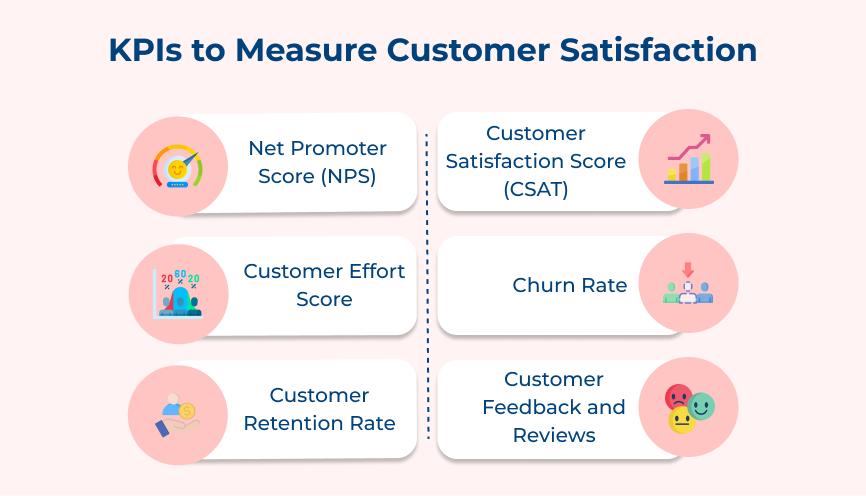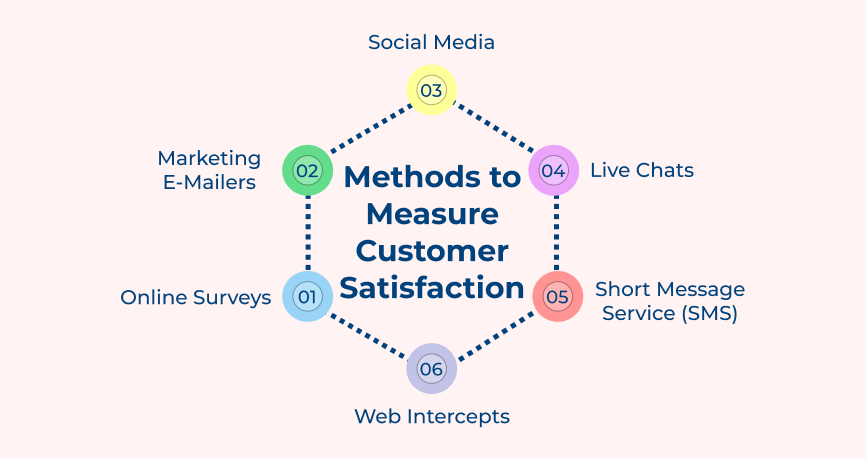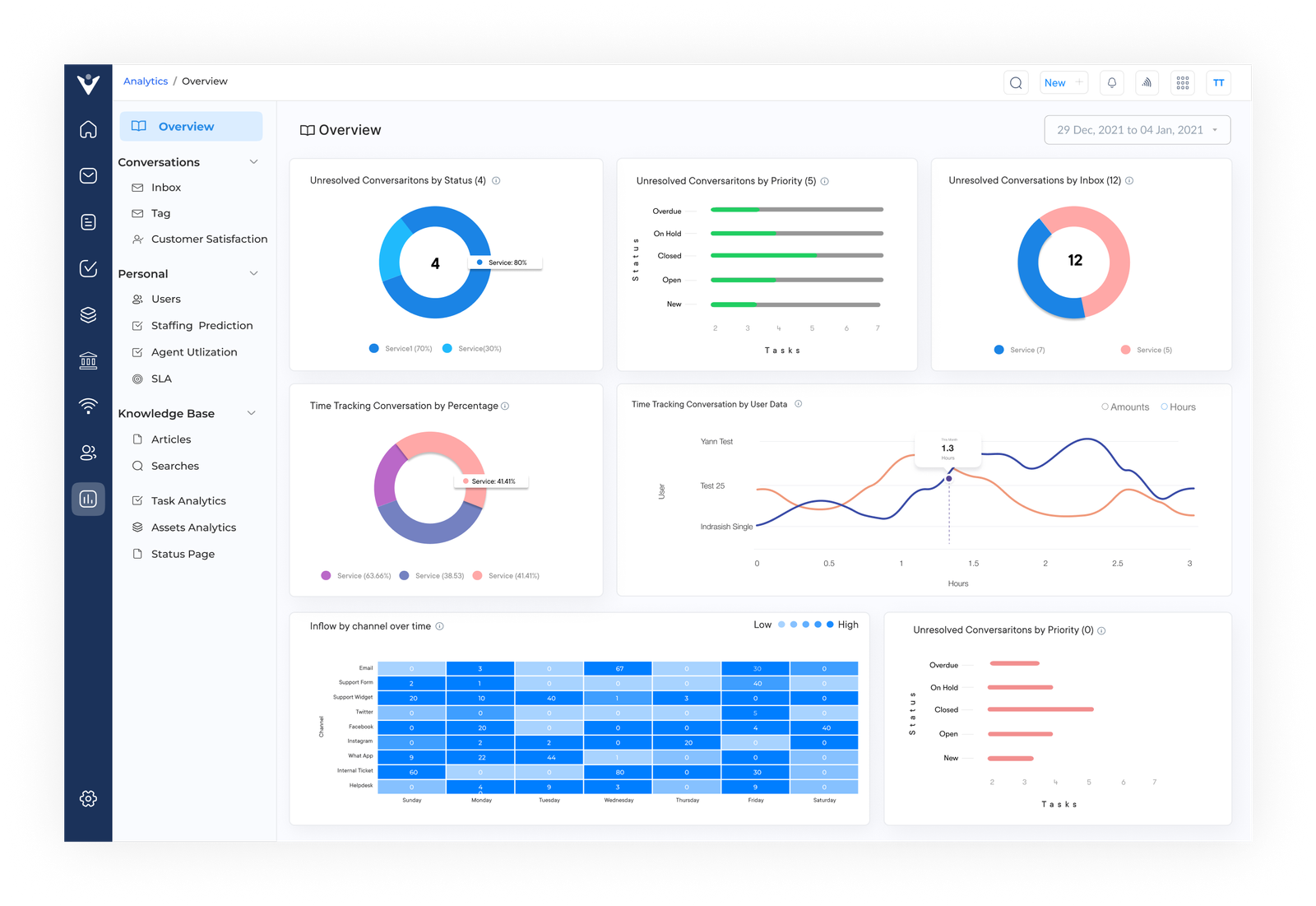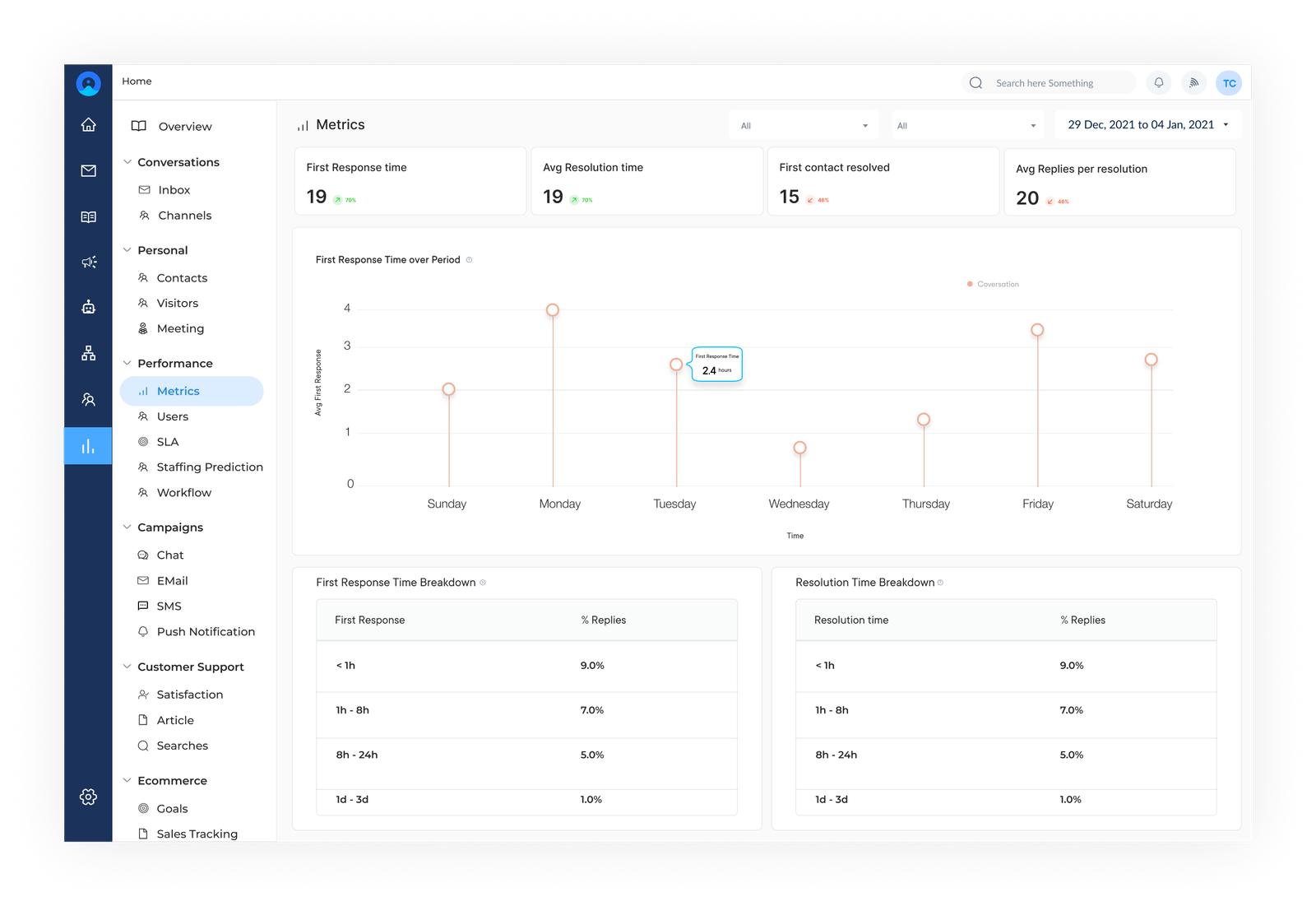1. Define your Goals
When it comes to how to measure customer satisfaction, defining the goals is a crucial first step. It involves setting clear objectives that align with the business’s overall strategy and vision. Defining the goals allows businesses to better understand what they want to achieve and how they plan to measure success.
Defining goals is significant in the process of measuring customer satisfaction as it provides direction and focus. It allows businesses to identify key performance indicators (KPIs) that will help them track progress and make informed decisions. Let’s say the goal is to improve customer loyalty, the business may choose to measure repeat purchase rates or customer retention rates.
Actionable tips:
- Be specific and measurable: Set clear, quantifiable objectives that can be easily tracked and evaluated.
- Align with business objectives: Ensure that the goals are in line with the company’s overall mission and strategy.
- Regularly review and adjust: Continuously monitor the progress and be willing to make adjustments as needed to stay on track toward achieving the goals.
2. Outline a Plan
Measuring customer satisfaction involves outlining a plan to gather feedback from the customers in different ways. The step is crucial because it enables businesses to gather diverse perspectives and insights on how their customers feel about the solutions. Using various methods to measure customer satisfaction allows businesses to gain a more comprehensive understanding of the customers’ experiences.
Let’s take an example. Businesses can implement surveys, feedback forms, social media polls or customer reviews to collect feedback from customers. Each method offers unique advantages and allows businesses to gather valuable data on different aspects of their satisfaction.
Actionable tips:
- Mix up your methods: Use a combination of qualitative and quantitative methods to gather feedback.
- Regularly review and update your plan: Customer preferences can change over time, so it’s essential to continuously evaluate and adjust the measurement.
- Engage with your customers: Actively seek out feedback from the customers and show that the business values their opinions by taking action on their suggestions.
3. Choose a Type of Customer Satisfaction Survey
When it comes to measuring customer satisfaction, choosing the right type of survey is crucial. The process of measuring customer satisfaction involves selecting a type of survey that will provide businesses with the most valuable insights into customers’ experiences. It is significant because the type of survey the organization chooses will impact the quality of the feedback received.
Different types of surveys such as Net Promoter Score (NPS), Customer Satisfaction Score (CSAT) or Customer Effort Score (CES), each have their strengths and weaknesses. Let’s look at an example. NPS measures customer loyalty and the likelihood of recommending businesses to others, while CSAT focuses on overall satisfaction with a specific product or service.
Actionable tips:
- Consider your goals: Think about what specific aspect of customer satisfaction the business wants to measure and choose a survey type that aligns with those goals.
- Keep it simple: Make sure the survey is easy for customers to complete and understand to increase response rates.
- Test and iterate: Don’t be afraid to try different survey types and methods to see what works best for the business.
4. Customize the Survey’s Layout and Questions
Customizing the survey’s layout and questions is crucial in understanding the preferences of the customers. Asking the right questions in a user-friendly format allows businesses to identify areas of improvement, measure customer loyalty and make informed decisions to enhance overall satisfaction.
Let’s take the example of a retail business that is looking to measure customer satisfaction. It may want to include questions about product quality, store cleanliness and staff friendliness in the survey. Customizing the questions to reflect the industry and target audience allows businesses to gather meaningful data to drive strategic improvements.
Actionable tips:
- Keep the survey short and concise to encourage more responses.
- Use a mix of open-ended or multiple-choice questions to gather both qualitative and quantitative data.
- Test the survey with a small group before sending it out to ensure clarity and effectiveness.
5. Determine the Survey’s Trigger
Determining the survey’s trigger is an essential component in measuring customer satisfaction as it helps to identify the right time to gather feedback from the customers. The step is crucial in ensuring that businesses receive accurate and timely responses from their customers. It allows them to make informed decisions on how to improve their products or services.
Consider an example of a retail business that may want to trigger a survey immediately after a customer purchases on the website or in-store. It will capture their experience while it is still fresh in their minds and provide valuable insights into their satisfaction levels.
Actionable tips:
- Timing is everything: Make sure to send the survey at a time when the customers are most likely to respond such as after a positive interaction or experience with the brand.
- Personalization is key: Tailor the survey triggers based on different customer segments or behaviors to ensure that they are capturing feedback from a diverse range of customers.
- Test and optimize: Continuously optimize the survey triggers to improve response rates and gather more insightful feedback from the customers.
6. Select the Survey Medium
Selecting the right survey medium is crucial when measuring customer satisfaction. The survey medium determines how businesses will reach out to customers to gather feedback on their experiences with the solutions. It can include online surveys, phone calls, email surveys or even in-person interviews.
The significance of the step lies in ensuring that businesses can reach their target audience effectively and gather meaningful insights that can help improve their business operations. Let’s say the target audience primarily consists of tech-savvy individuals, an online survey may yield better results compared to a phone call survey.
Actionable tips:
- Know your audience: Understand the preferences of the target audience to choose the most appropriate survey medium.
- Keep it simple: Make sure the survey medium is easy to use and understand to encourage more responses.
- Test and iterate: Experiment with different survey mediums to see which one yields the best results and be willing to make adjustments based on feedback.
7. Analyze your Survey Data
When it comes to measuring customer satisfaction, analyzing the survey data is a crucial step in understanding the needs and preferences of the customers. Carefully examining the data collected from surveys allows businesses to gain valuable insights into customer satisfaction levels and make informed decisions to improve their solutions.
Analyzing survey data allows businesses to identify trends, patterns and areas of improvement. Assume that by analyzing survey responses a company may discover that customers are dissatisfied with the delivery process or that a specific feature of a product is not meeting their expectations.
Actionable tips:
- Look for trends: Identify common themes or patterns in the data to better understand what is driving customer satisfaction levels.
- Compare results: Compare survey data over time or between different customer segments to track changes and identify areas for improvement.
- Use visualization tools: Utilize data visualization tools such as graphs, charts and dashboards to present survey data concisely.
8. Make Adjustments and Repeat
The step involves taking the feedback and data gathered from the customer satisfaction measurement tools. It uses them to improve the products, services or processes. Continuously assessing and making adjustments based on customer feedback allows businesses to ensure that businesses are consistently meeting their expectations.
One example of how the step can be applied is in a restaurant setting. After collecting feedback from customers through comment cards or online surveys, the restaurant owner may discover that customers consistently complain about long wait times for their food. Considering the feedback allows the owner to make adjustments to streamline their kitchen operations, resulting in quicker service and higher customer satisfaction.
Actionable tips:
- Analyze feedback: Regularly review and analyze customer feedback to identify recurring issues or trends.
- Focus on changes: Implement changes based on customer feedback, whether it be through staff training, process improvements or product enhancements.
- Monitor satisfaction score: Continuously monitor customer satisfaction levels to gauge the effectiveness of the adjustments made.
6 KPIs to Measure Customer Satisfaction
Following are the pivotal KPIs that can transform your approach to customer satisfaction, helping you create deeper connections and drive greater loyalty.






